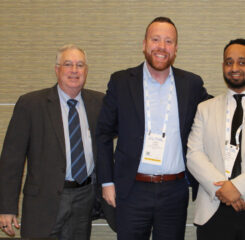On August 12, the Trump administration made public its plan to overhaul the federal government’s approach to workforce development. America’s Talent Strategy: Building the Workforce for the Golden Age outlines a comprehensive vision for transforming the U.S. workforce system to better align with industry needs and national economic priorities. Drafted jointly by the departments of Labor, Commerce, and Education, the strategy is built around five pillars—Industry-Driven Strategies, Worker Mobility, Integrated Systems, Accountability, and Flexibility & Innovation—that aim to modernize how the U.S. prepares its workforce, particularly in the face of labor market changes due to AI innovation and reindustrialization efforts.
Pillar I: Industry-Driven Strategies
The first pillar centers on aligning workforce development with the needs of employers. The strategy criticizes traditional models that it says operate in isolation from labor market realities and instead calls for a system led by industry. Employers would be positioned as co-designers of training programs, including Registered Apprenticeships (RAs), which would be ramped up significantly with a target of over one million active apprenticeships. It calls for programs to be built around employer-defined skill requirements and credentials, ensuring that training leads directly to high-wage, in-demand jobs. The strategy also emphasizes early career exposure, starting in middle school, and encourages the workforce system to develop sector partnerships that ensure work-based learning strategies such as career and technical education (CTE) meet industry needs. It also notes that federal investments will prioritize sectors critical to national competitiveness, such as manufacturing, energy, and AI development.
Pillar II: Worker Mobility
The second pillar focuses on expanding access to the labor market and enabling career advancement for American workers. In part, this pillar promotes strategies for reaching the disconnected workforce—particularly long-term unemployed and underemployed men aged 25 to 54 who, according to the report, are statistically the most disconnected from the labor force. The strategy also calls for removing unnecessary occupational licensing barriers that restrict entry into the workforce and limit cross-state movement. It calls on the Department of Labor to lead efforts to modernize licensing systems and promote reciprocity frameworks. Additionally, it highlights that enactment of Workforce Pell Grants via HR 1 expands access to federal financial aid for short-term, high-quality training programs that lead directly to employment, offering new opportunities for learners pursuing credentials aligned with immediate labor market needs.
Pillar III: Integrated Systems
The third pillar is concerned with the fragmentation of the current workforce system, which is spread across multiple federal agencies and funding streams. The strategy proposes centralizing federal workforce programs under the Department of Labor to create a unified, navigable system for workers and employers. Such consolidation would reduce administrative duplication, harmonize eligibility standards, and streamline service delivery. The strategy also elevates a key legislative proposal, Make America Skilled Again (MASA), which would consolidate 11 current federal workforce programs into a single flexible grant for states, allowing them to tailor workforce investments to local economic needs.
Pillar IV: Accountability
The fourth pillar introduces an accountability framework. In calling for federal workforce funding to be tied to measurable outcomes such as job placement, earnings growth, and credential attainment, the strategy contextualizes the administration’s goal to eliminate Job Corps and the Senior Community Service Employment Program (SCSEP), which it says have consistently failed to demonstrate impact. Further, the strategy calls for harmonized performance metrics across agencies, public dashboards to compare program effectiveness, and expanded use of pay-for-performance contracts. This pillar also calls for programs to rigorously verify work authorization status, ensuring that federally funded workforce services are reserved for individuals who are legally eligible to work in the U.S.
Pillar V: Flexibility & Innovation
The final pillar emphasizes the need for agility in the workforce development system to keep pace with economic and technological change. The strategy promotes the use of existing statutory authorities, such as Workforce Innovation and Opportunity Act (WIOA) waivers, to allow states and localities to test new models that may fall outside WIOA’s current approach for delivering training. It proposes that innovation will be driven by faster feedback loops between employers, workers, and training providers, enabling rapid adaptation to evolving skill demands. Additionally, it calls for AI literacy and skill development to be integrated into education and workforce systems to help accelerate adoption of the technology by American youth, job seekers, and workers across the country.
Together, these five pillars envision a federal workforce development system that engages employers, streamlines access for workers, and ensures federal funds yield measurable outcomes. Although it was not drafted with the aging services or broader health care sector as a central focus, the strategy nonetheless presents meaningful opportunities for engagement. In particular, LeadingAge sees potential to help shape workforce development models that reflect the realities of caregiving roles and career advancement in aging services. The strategy’s emphasis on licensing and credentialing reform could also support efforts to improve recruitment and retention in our sector, particularly related to certified nursing assistants. LeadingAge will follow up with the Department of Labor to advocate for the inclusion of aging services priorities within the implementation of this plan.

 Shutdown Week Three: Impact of Ongoing Closure on Affordable Housing
Shutdown Week Three: Impact of Ongoing Closure on Affordable Housing Colleagues on the Move, December 17, 2025
Colleagues on the Move, December 17, 2025


